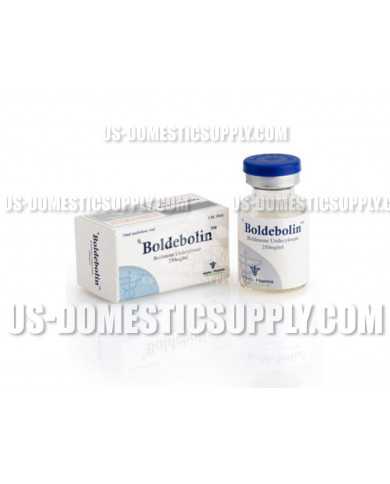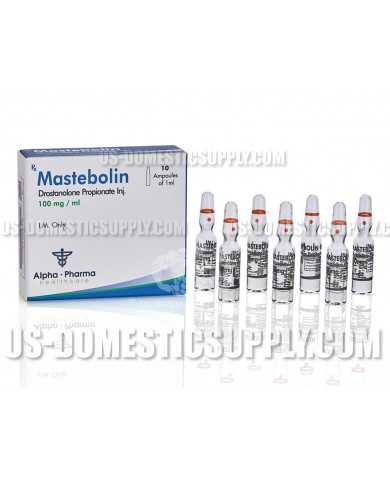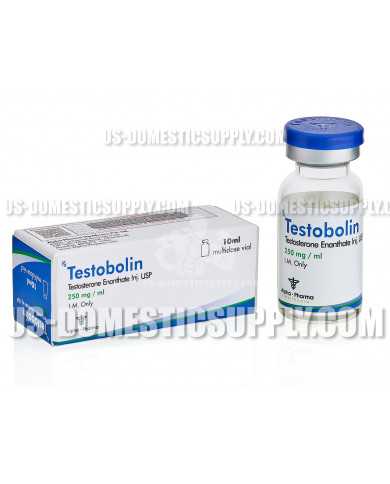OVERVIEW AND HISTORY OF EQUIPOISE
Equipoise is the brand/trade name for the anabolic steroid Boldenone, which is an oil-based injectable anabolic steroid with the Undecylenate ester attached to it for a prolonged release rate and half-life. It is a derivative of Testosterone that retains Testosterone’s anabolic strength but exhibits a reduced androgenic effect in comparison. Equipoise is primarily a veterinary product, originally intended for use in animals. Equipoise has gained popularity with bodybuilders and athletes as a less androgenic form of Testosterone with less Estrogenic activity than Testosterone as well. Many users enjoy comparing it to that of Nandrolone (Deca Durabolin), however, this comparison is a very poor one seeing as though Nandrolone exhibits different properties than Equipoise and is also a totally different class of compounds (a 19-nor, also known as a progestin). However, many consider Nandrolone and Equipoise to be a solid substitute for one another in any given cycle.
A few interesting facts first about this compound: Equipoise was in fact developed in 1949, even before Dianabol (Methandrostenolone), making Equipoise technically the very first synthetic derivative of Testosterone even before Dianabol was ever thought of. Furthermore, Dianabol itself is actually Equipoise (Boldenone) with a methyl group attached to its 17-beta hydroxyl group on the steroid chemical structure (also known as C17-alpha alkylation) in order to allow it to become orally bioavailable in the body. Technically, Dianabol (Methandrostenolone) is actually C17-alpha alkylated Equipoise. It would have been considered an oral form of Equipoise, but the methylation at the 17th carbon atom changed enough of the properties of the compound that it was considered a totally different anabolic steroid analogue, and named Methandrostenolone (Dianabol). If pictures of the chemical structures of Equipoise and Dianabol were laid out side by side, one would easily be able to tell the exact same chemical structure between the two, with the exception of the methyl group affixed to the 17th carbon on the Dianabol chemical structure. It is very evident that these two anabolic steroids are essentially the exact same.
Although Equipoise was first developed in 1949, it was not until the 1960s when this compound would be finally released and marketed as Parenabol. Between 1949 and its release in the 1960s, Ciba had toyed around with Equipoise by attempting to affix different esters onto it in order to augment its half-life and release rates. The final conclusion was that it would be released with the Undecylenate ester attached to it, and the final preparation was that of Boldenone Undecylenate. Following the release of Parenabol, various clinical trials and testing of this compound was conducted in the late 1960s and early 1970s with the goal in mind to use it as a lean mass promoting and preserving anabolic steroid in order to treat individuals suffering from any condition in which wasting and weight loss were symptoms, as well as an osteoporosis treatment. Parenabol saw very little application or use following its release, and towards the end of the 1970s, it was removed from the market and discontinued.
Squibb would then pick up the patents for this anabolic steroid and re-release Boldenone under the name Equipoise as a veterinary anabolic steroid meant primarily for application in horses but is also intended for use in other animals. Equipoise is well known for its lean mass increases as well as its appetite-stimulant effects, which is an effect common among nearly all anabolic steroids. However, Equipoise tends to stimulate the appetite to far greater degrees than any other anabolic steroids. Although the manufacture and marketing of Equipoise has changed many hands over the years, it still remains available on the American market as well as internationally with plenty of generic brands as well as actual brand names available.
CHEMICAL CHARACTERISTICS OF EQUIPOISE
As previously mentioned, Equipoise is a synthetic derivative of Testosterone where it has been modified at carbon 1 and carbon 2 on the steroid structure, where double-bonds have been added between these two carbon atoms. This is what is known as the modification that is responsible for reducing Equipoise’s affinity for interaction with the aromatase enzyme (the enzyme responsible for the conversion of androgens into Estrogen). As a result, its Estrogenic activity is regarded to be lower than Testosterone. Equipoise is Boldenone with the Undecylenate ester attached to it. Specifically, ‘Undecylenate’ is Undecylenoic acid, but once bound to Boldenone it is properly referred to in chemistry as an ester bond (or ester linkage). Undecylenoic acid is chemically bonded to the 17-beta hydroxyl group on the Boldenone structure. The addition of this ester augments the hormone’s release rate and half-life to favor a longer window of release. The primary reason for the augmentation of its half-life and release rate is because once Boldenone Undecylenate enters the bloodstream, enzymes work to break the bond between the ester and the hormone, which takes a varying amount of time. The end result is that of the ester being removed from the hormone by these enzymes, and the result following this is pure Boldenone that is free to do its work in the body. This process of enzymes removing the ester from the hormone to which it is attached is what is responsible for the slower release rates. When the Undecylenate ester is attached to Boldenone, creating Boldenone Undecylenate, the half-life of Boldenone is now extended to 14 days, providing a slower release and activity of the hormone than the hormone otherwise would without this ester.
Additionally, as noted near the beginning of this section, Equipoise and Dianabol are structurally identical with the only difference between the two being that Equipoise contains a the Undecylenate ester attached to its 17-beta hydroxyl group, and Dianabol instead contains a methyl group attached to its 17-beta hydroxyl group. Dianabol contains the methyl group (also known as C17-alpha alkylation) in order to prevent it from being metabolized and broken down by the liver through oral ingestion. Aside from these modifications, the two hormones are exactly identical and would be considered the exact same compounds. However, both of these hormones act significantly different from one another in the body, which is a very strong indication that the addition of a methyl group (C17-alpha alkylation) to the 17th carbon does more than just affect the hormone’s resistance to breakdown in the liver – it actually changes the effects and properties of the anabolic steroid.
PROPERTIES OF EQUIPOISE
Equipoise being a derivative of Testosterone grants it many of the same properties. For one thing, it possesses the exact same anabolic strength rating (100), and it is also an aromatizable anabolic steroid, which means that Equipoise can and does convert into Estrogen in the body through interaction with the aromatase enzyme. However, its double-bond modifications between carbons 1 and 2 reduce its affinity for the aromatase enzyme, granting it a lower rate of aromatization and therefore a lower Estrogenic activity in the body.
What this means is that Equipoise will still convert into Estrogen, but at a far less significant amount than its parent hormone Testosterone. Although this is a very comforting fact and a pleasing property, the issue of Estrogenic side effects is still an issue and should not be ignored by any users. Therefore, individuals can expect not an elimination of potential water retention, but a vast difference in a reduction of it from Equipoise alone. Although at sensible and moderate doses, Equipoise should not exhibit bloating or any other estrogenic effects (depending on user sensitivity), the risk of these Estrogenic side effects will indeed increase as higher and higher doses of Equipoise are used. Increasing doses will mean increased rates of aromatization of the anabolic steroid into Estrogen.
Equipoise itself possesses a low androgenic strength rating (lower than its progenitor hormone Testosterone), which should be pleasing to individuals whom are sensitive to any number of androgenic side effects. Overall, individuals utilizing Equipoise can expect the same anabolic size, strength, and mass gains that would come from Testosterone with a lower incidence of Estrogenic activity and androgenic side effects. This means that gains from Equipoise itself should, for the most part, be fairly solid lean mass gains with minimal water retention (depending on dose) and would be a perfect addition to any bulking or lean mass cycle. It would even work as an appropriate replacement for Nandrolone in any stack.
EQUIPOISE (BOLDENONE)
Chemical Name: 1,4-androstadiene-3-one, 17 beta-ol, 1-dehydrotestosterone
Molecular Weight: 286.409 g/mol
Formula: C19H26O2
Original Manufacturer: Ciba
Half Life: 14 daysDetection Time: 4 – 5 months
Anabolic Rating: 100
Androgenic Rating: 50
Boldenone Undecylenate (Equipoise) 600mg/2ml 10 amps ZPHC
Reviews
No customer reviews for the moment.















